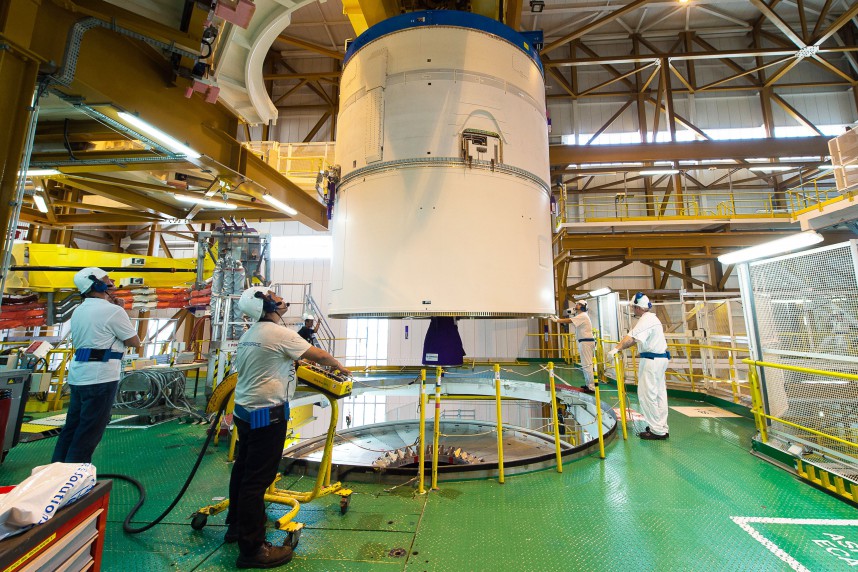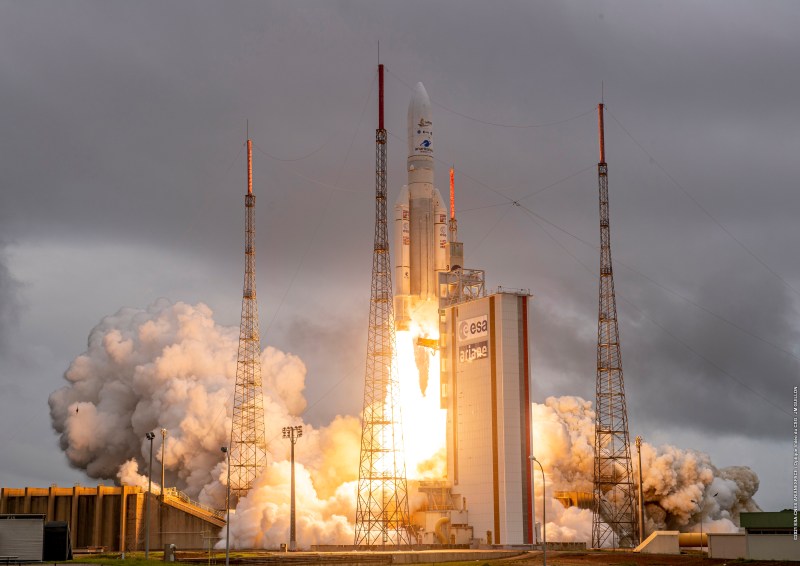Featured Image: ESA
Lift Off Time | July 05, 2023 – 22:00 UTC | 19:00 GFT |
|---|---|
Mission Name | VA261 – Syracuse 4B & Heinrich Hertz (H2Sat) |
Launch Provider | Arianespace |
Customer | French armed forces and German Federal Ministry of Economics and Technology (BMWi) |
Rocket | Ariane 5 ECA+ |
Launch Location | ELA-3, Guiana Space Centre, French Guiana, France |
Payload mass | 6,950 kg (15,300 lb) |
Where are the satellites going? | Geostationary Transfer Orbit |
Will they be attempting to recover the first stage? | No, this is not a capability of Arianespace |
Where will the first stage land? | It will crash into the Atlantic Ocean |
Will they be attempting to recover the fairings? | No, this is not a capability of Arianespace |
Are these fairings new? | Yes |
How’s the weather looking? | TBD |
This will be the: | – 296th mission for Arianespace ever – 2nd mission for Arianespace in 2023 – 117th Ariane 5 mission – 2nd Ariane 5 launch in 2023 – 98th orbital launch attempt |
Where to watch | Official livestream Tim Dodd, the Everyday Astronaut, will be streaming at around T-30 minutes; come ask questions and join the conversation live! |
What’s All This Mean?
After 27 years of service, the Ariane 5 era is coming to a close. For the last launch of the Ariane 5 rocket, specifically the ECA+ variant, it will loft two satellites into a geostationary transfer orbit, leaving the rest of the work to onboard propellant systems. The two satellites are the Syracuse 4B and the Heinrich Hertz (H2Sat) for the French government and German space agency, respectively.
This will be the 117th and final mission for the Ariane 5, which had its first successful launch in 1998 as it’s G variant. The first ever launch attempt was in 1996. The Ariane V has launched numerous notable payloads such as the recently launched James Webb Space Telescope, Rosetta, JUICE, and BepiColombo just to name a few.
What Is Syracuse 4B?
Syracuse 4B is the second of two military communications satellites built by Thales Alenia Space and Airbus Defence and Space for the French defense procurement agency DGA (Direction Générale de l’Armement). It will join the previously launched Syracuse 4A satellite, which was launched on an Ariane 5 in October 2021. Both of these satellites are designed to integrate with the already in-use system, but provide greater throughput, capacity, and flexibility.
In order to protect against cyber threats, Syracuse 4B was built on the Spacebus NEO platform, which enables state-of-the-art signal blocking and jamming defenses. The satellite has a design life of 15 years.

What Is Heinrich Hertz (H2Sat)?
A brand new communications satellite for Germany, the Heinrich Hertz (H2Sat) is finally getting to orbit after delays. The project is managed by German Federal Ministry for Economic Affairs and Energy (BMWi) and the planning was done by the Space Administration of the German Aerospace Center (DLR).
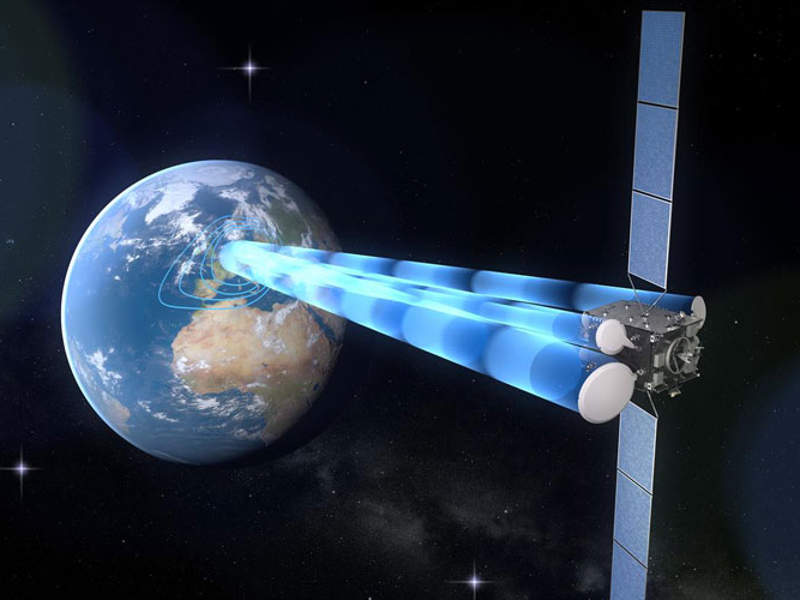
Similar in function to Syracuse 4B, H2Sat will provide secure and direct communication for the German Armed Forces (Bundeswehr). The satellite was built on on the OHB System’s SmallGEO (Small Geostationary Satellite Orbit) bus enabling it to have 20 payload of various functions and onboard processing capabilities. Also onboard is a military payload to assist with military communications.
With a design life of 15 years, the satellite has two solar arrays which will provide 36,000 watts of continuous power. Some mission objectives include technology demonstrations of various new technologies. High-performance multi-stage plasma thrusters are mounted on board for station keeping, along with a multi-beam antenna, and the ability to provide high data rates for mobile users.
What Is The Ariane 5 ECA?
The Ariane 5 ECA is a European heavy-lift launch vehicle developed by Arianespace for the European Space Agency. Regarded as one of the most reliable launch vehicles in the world, the Ariane 5 has launched 109 times since 1996 with a 95.4% success rate.
The rocket flew 82 consecutive missions without failure before suffering a partial failure in January 2018. The Ariane 5 launches from the European Spaceport in French Guiana, a spaceport close to the equator, which allows the rocket to take advantage of the Earth’s greater rotation speed there and boost the launch performance.
The ECA version of the Ariane 5 is capable of launching two large satellites, one on top of the other, using an adapter known as the Système de Lancement Double Ariane (SYLDA). The adapter covers the lower satellite as it supports the higher satellite. When the time comes for satellite deployment, the top satellite is released first, the SYLDA is then jettisoned, and the bottom satellite is released last.
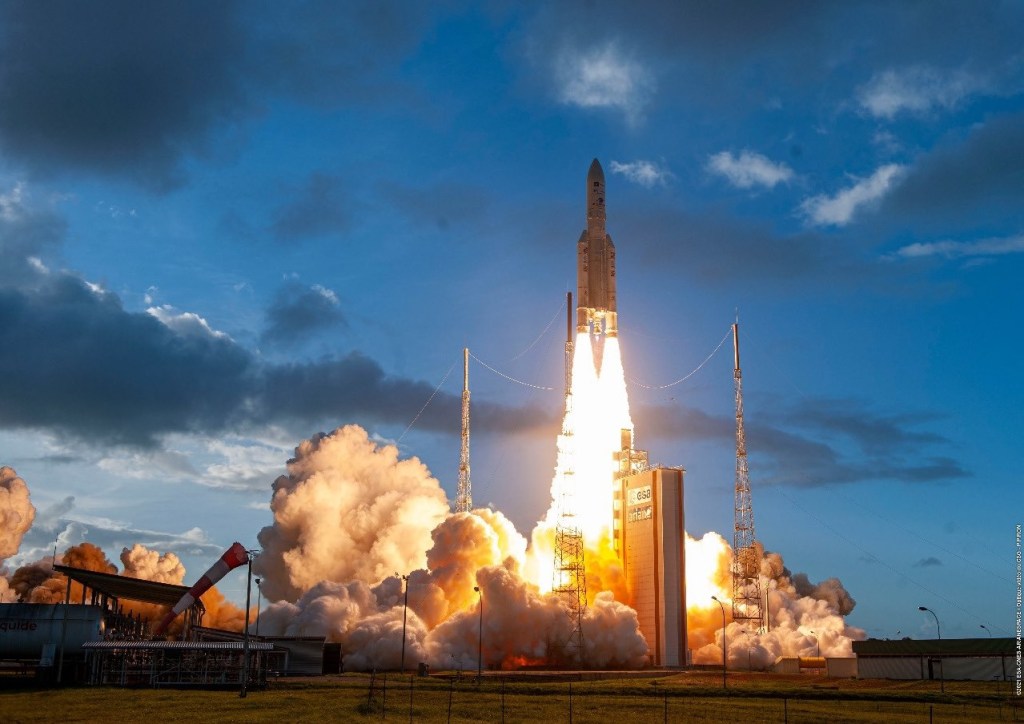
Boosters
Two P241 solid rocket boosters (SRBs) are attached to the sides of the rockets main stage. They are fueled with a mixture of ammonium perchlorate (AP) (68%), aluminium fuel (18%), and Hydroxyl-terminated polybutadiene (HTPB) (14%). Each booster provides about 7,080 kN (1,590,000 lbf) of thrust, burning for 130 seconds before crashing into the ocean. They are usually left to sink to the bottom of the ocean, but similarly to the Space Shuttles SRB, it is possible to recover them using parachutes. When this is done it is for post-flight analysis, and the boosters are not reusable.
Main Stage
The Ariane 5 has a cryogenic H173 main stage, called the EPC (Étage Principal Cryotechnique — Cryotechnic Main Stage), which burns for 540 seconds. It is comprised of a main tank, which is 30.5 m tall and has two compartments, one compartment for liquid hydrogen (LH2) and the other for liquid oxygen (LOx). A Vulcain 2 engine sits at the base and provides vacuum thrust of 1,390 kN (310,000 lbf).
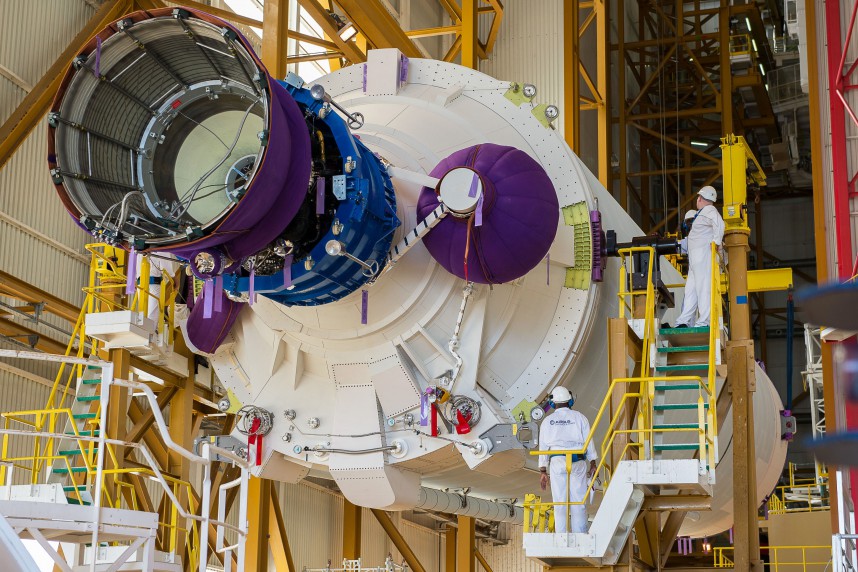
Second Stage
The ECA has an upper stage called the ESC-A (Étage Supérieur Cryotechnique — Cryogenic Upper Stage), and uses an HM7B engine, which is fueled by liquid hydrogen (LH2) and liquid oxygen (LOx). The stage provides 67 kN (15,000 lbf) in vacuum, has an ISP of 446 seconds, and will burn for 945 seconds.
